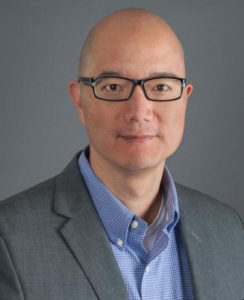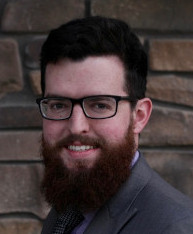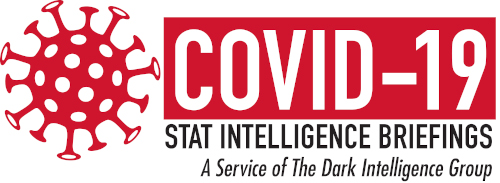Insights into the University of Illinois’ COVID-19 testing program provides clinical laboratorians with perspective on COVID-19 testing for universities
While the importance of COVID-19 testing has been realized by many different entities during the pandemic, one of the areas where testing is most ubiquitous has been universities. Universities are faced with trying to find the right balance of providing ongoing education while maintaining the safety of their students and faculty.
Clinical laboratories may serve colleges or universities in their regions, or may partner with these academic institutions, to establish COVID-19 tests and safety protocols. To better understand the challenges that universities face with regards to COVID-19 testing, and how they are overcoming these challenges, the COVID-19 STAT Intelligence Briefings Service spoke with one of the leaders of University of Illinois’ testing program.
Timothy Fan, DVM, PhD, is a professor at the University of Illinois with a background in veterinary medicine and tumor immunology. Fan has been one of the leaders in the development of the Shield Campaign, the University of Illinois’ COVID-19 testing and prevention program.
“The Shield Campaign is made up of three components and forms a protective bubble or a protective ecosystem for our campus,” Fan explained. “The Shield Campaign has a target component, a testing component, and a telling component. The target component involves identifying populations at risk through modeling via epidemiologists, which allows us to tailor the frequency of testing in a very specific, targeted manner.”
University of Illinois Rapidly Scaled Up a Fast Turnaround COVID-19 Saliva Test
Clinical laboratory leaders will want to take note of the testing component of the University of Illinois’ Shield Campaign. This component consists of a laboratory developed test (LDT) that uses PCR testing on saliva specimens. “The test component involved the very rapid scaling up of an efficient and fast turnaround saliva test,” Fan told STAT COVID-19.

“The median turnaround time for results, meaning the deposition of saliva to getting the results, is about 11 hours, which is favorable compared to the majority of PCR-based testing laboratories,” Fan said. In developing the test, Fan explained that researchers from four different labs at the university met and developed the saliva-based test over six weeks. “We describe it as a ‘Manhattan Project’ in which our really bright minds met to develop this test,” Fan said.
Why Saliva Test Instead of Nasopharyngeal: Four Reasons
The team quickly realized that the classic nasopharyngeal (NP)-based tests had restrictions that made the team avoid this testing methodology. “We envisioned there would be several bottlenecks that did not make a classic nasopharyngeal swab/viral transport media/viral isolation technique feasible,” Fan said. “We identified many bottlenecks. One is the technique; NP collection would be, psychologically, not something that you would want to look forward to doing and might try to avoid. The second is the necessity of a healthcare provider to collect the specimen. The third is you need to have this viral transport media, and fourth, is that you have to have RNA isolation, both of which are susceptible to supply chain shortages.”
The resulting test that the team developed was a direct saliva test, Fan explained. “In this test we simply have someone collect saliva in a tube,” Fan said. “We take that saliva, and we treat it with heat and a buffer, and it can actually go directly into our machine, which is a thermo-cycler that tells us if there is viral nucleic acid being detected or not.”
Multiplex Approach Maximized Throughput
Fan emphasized the key role that selecting the right reagents played in developing their LDT. In our methodology one of the key reagents we used was the Thermo Fisher TaqPath COVID Combo Kit,” Fan related. “We chose this kit because it had multiplexing capabilities that target three different viral genes. It allowed us to maximize throughput by testing for multiple genes at once.”
Importantly, since STAT COVID-19’s interview with Fan, the FDA has issued an alert to clinical laboratory staff (See FDA Issues Alert to Clinical Laboratories About the Effects of New SARS-CoV-2 Variant on Testing) in which it indicates that diagnostic testing using the TaqPath kit may play a role in detecting some SARS-CoV-2 variants including the B.1.1.7 variant that has become a recent concern.
The results of the LDT saliva test that the team at the University of Illinois developed were significant. “The implementation of the Target, Test, and Tell strategy for fall semester of 2020 was able to keep the positivity rate for COVID considerably lower for the University of Illinois faculty, staff, and students in comparison to surrounding areas that documented higher percent positivity rates.”
Growing Trend of Saliva Testing
Clinical laboratorians should be aware that more universities and other entities are recognizing the potential shortcomings of NP-based testing and the advantages that saliva testing offers. The University of Georgia announced in early January that its testing strategy would shift to relying mostly on saliva-based testing for the Spring 2021 semester. This trend seems to be motivated, in part, due to the increased comfort (and therefore compliance) that saliva testing offers, coupled with the decreased reliance on reagents and transport media that is prone to supply chain restrictions.
The success of the testing program at the University of Illinois may serve as a pattern for clinical laboratorians who are assisting other universities in developing and implementing a COVID-19 testing program in their schools.

—By Caleb Williams, Editor, COVID-19 STAT
Related Resources:
University of Georgia: Surveillance testing changes planned for spring semester
University of Illinois Profile: Timothy Fan, DVM, PHD






